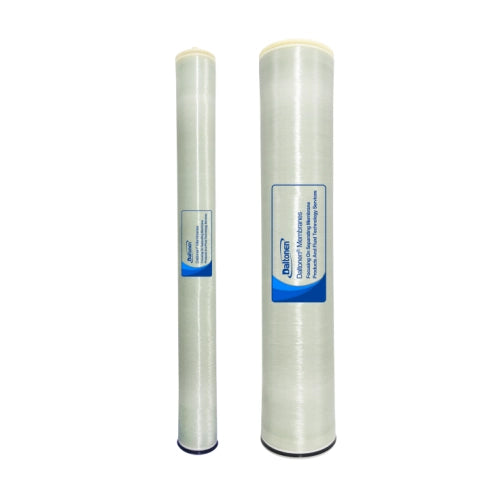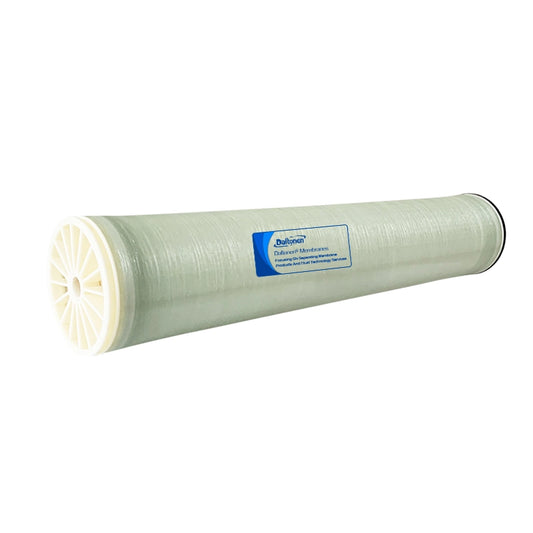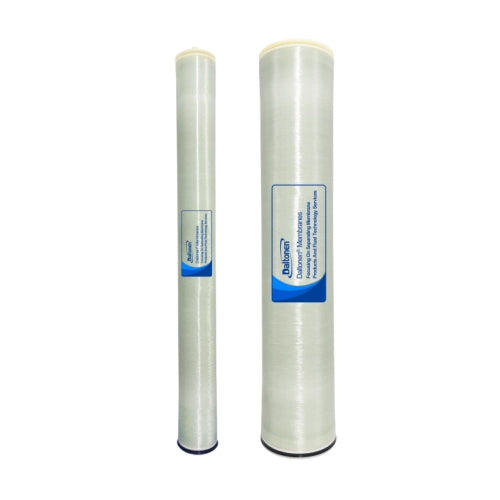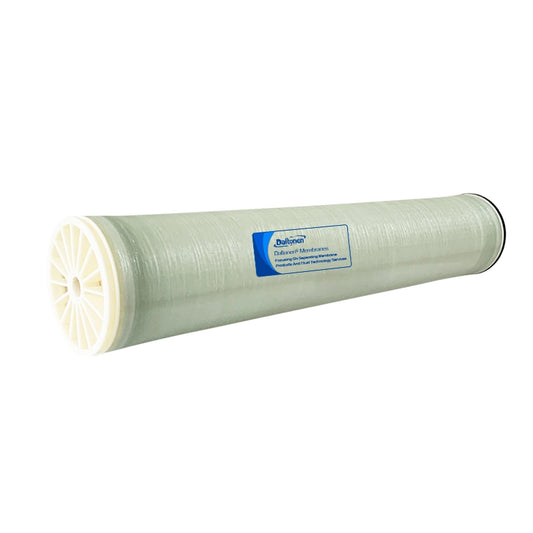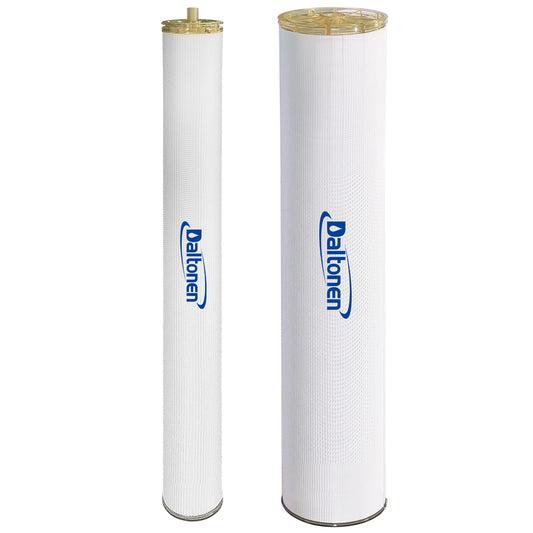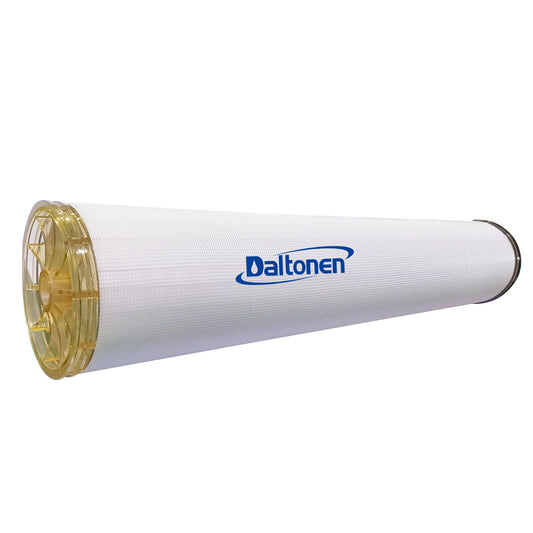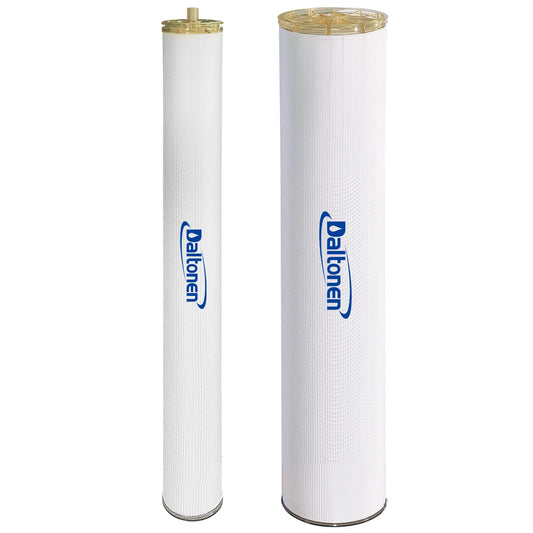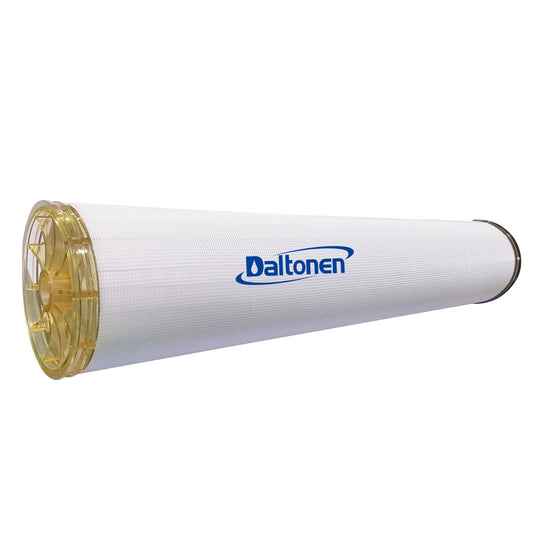Process Design of Nanofiltration Membrane for Edible Salt Production Plants
30 Apr 2025
I. Design Objectives
Raw Brine: Underground brine or sea salt brine, with main components: NaCl (200–300 g/L), Ca²⁺ (500–2000 mg/L), Mg²⁺ (300–1500 mg/L), SO₄²⁻ (2000–5000 mg/L).
Product Requirements:
-
Refined edible salt (NaCl ≥99.5%, whiteness ≥80, in compliance with GB 2721-2015 standard).
-
Reduce evaporation energy consumption, lower calcium, magnesium, sulfate, and other impurities, and improve crystallization efficiency.

II. Process Flow
The core process adopted is “pretreatment + nanofiltration membrane separation + evaporation crystallization,” with the specific process as follows:
1. Pretreatment System
Coarse Filtration (Quartz Sand/Multi-Media Filter):
-
Remove suspended solids in the brine (SS≤50 mg/L) to prevent membrane system blockage.
Precision Filtration (5–10 μm Security Filter):
-
Further intercept fine particles to protect the nanofiltration membrane.
pH Adjustment (Optional):
-
Add hydrochloric acid or NaOH to adjust pH to 6–8 to prevent membrane fouling (adjust according to water hardness).
2. Nanofiltration Membrane Separation System
Nanofiltration Membrane (NF) Configuration:
-
Membrane Type: Spiral-wound polyamide composite membrane (rejection rate for divalent ions >95%, NaCl rejection rate <20%).
-
Operating Parameters:
-
Operating pressure: 1.0–2.5 MPa
-
Recovery rate: 70%–80% (dynamically adjusted according to feed concentration)
-
Flux: 15–25 LMH (liters per square meter per hour)
-
Functional Effects:
-
Impurity Removal:
-
Retain Ca²⁺, Mg²⁺, SO₄²⁻ (removal rate >90%) to reduce scaling risk in subsequent evaporation.
-
-
NaCl Permeation:
-
NaCl loss <10%, NaCl concentration in concentrate increased to 250–350 g/L.
-
Concentrate Treatment:
-
Partially recirculated to the front end (to increase recovery rate) or used for industrial salt production (e.g., de-icing agents).
3. Evaporation Crystallization System
Multiple-Effect Evaporation (MVR Mechanical Vapor Recompression):
-
Use nanofiltration permeate (low-impurity brine) for evaporation, reducing energy consumption by 30%–50%.
-
Salt purity increased to over 99.5%, with significant improvement in whiteness.
Centrifugal Dewatering + Fluidized Bed Drying:
-
Final salt moisture content ≤0.5%, controllable particle size (50–500 mesh).
III. Key Equipment Selection
| Equipment Name | Specification Parameters | Remarks |
|---|---|---|
| Nanofiltration Membrane Element | 8040 spiral-wound membrane, single element area 37 m² | Chlorine-resistant, high-pressure design |
| High-Pressure Pump | Flow rate 50 m³/h, head 200 m | Variable frequency control for energy saving |
| MVR Evaporator | Evaporation capacity 2 t/h, electricity consumption 40 kWh/t | Steam compression ratio 1:3 |
| Automatic Cleaning System (CIP) | Acid cleaning (pH=2, citric acid) + Alkaline cleaning (pH=12) | Once a week, flux recovery >95% |
IV. Operating Parameters and Benefits
| Indicator | Traditional Process (Without NF) | Nanofiltration Process |
|---|---|---|
| Evaporation energy consumption (kWh/t salt) | 300–400 | 150–200 |
| Scaling frequency | Once a month | Once a quarter |
| Salt whiteness | 70–75 | 80–85 |
| Sulfate residue (mg/kg) | ≤500 | ≤50 |
V. Cost Analysis
| Item | Cost (Yuan per ton of salt) | Notes |
|---|---|---|
| Nanofiltration membrane depreciation | 15–20 | Membrane life 3–5 years |
| Electricity consumption (including MVR) | 80–100 | Reduced by 50% compared to traditional process |
| Chemical cleaning agents | 5–8 | Citric acid, antiscalant |
| Total Cost | 100–128 | Traditional process about 180–220 yuan |
VI. Advantages of the Solution
Energy Saving and Consumption Reduction:
-
Nanofiltration pre-concentration reduces evaporation volume, and MVR technology further reduces steam energy consumption.
Quality Improvement:
-
After removal of calcium, magnesium, and sulfate, the purity and whiteness of crystallized salt are significantly improved.
Environmental Protection and Emission Reduction:
-
The concentrate can be reused, reducing waste residue emissions.
VII. Precautions
Membrane Fouling Control:
-
Regularly monitor feed water SDI (pollution index <5), and strengthen pretreatment filtration.
Concentrate Utilization:
-
High-sulfate concentrate can be used for gypsum production or building material raw materials.
Automation Control:
-
Use PLC system to monitor pressure, flow, and conductivity in real time to ensure stable operation.
VIII. Applicable Scenarios
-
Refining of sea salt, lake salt, and rock salt
-
Upgrading industrial salt production lines to edible salt
-
Resource utilization of high-impurity brine resources
For high-organic brine treatment (e.g., algae contamination), an additional activated carbon adsorption or ultrafiltration (UF) pretreatment unit can be added.
Tags:
